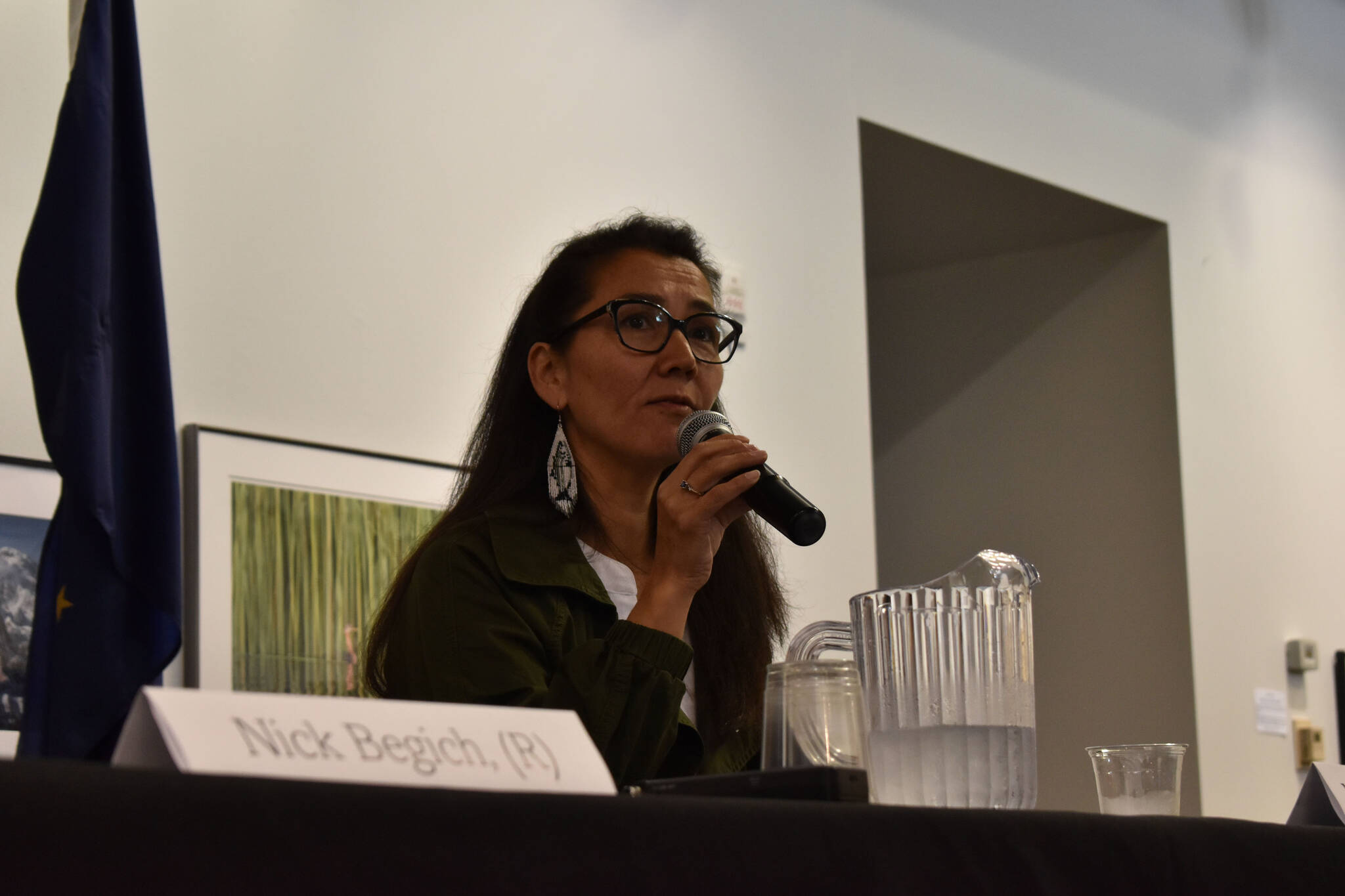By James Brooks
Democratic candidate Mary Peltola left election day leading Alaska’s special election for U.S. House, but the state’s new ranked choice voting system may leave Republican candidate and former governor Sarah Palin the ultimate winner.
As of 2 a.m. Wednesday morning, with 323 of 402 precincts reporting, Peltola had earned 38.4% of first-choice vote in a race that will determine who fills Alaska’s lone U.S. House seat until January, completing the term left unfinished by the death of Congressman Don Young earlier this year.
Trailing Peltola, with 32.6% of first-choice votes, was Palin. Republican candidate Nick Begich III was in third with 29% of first-choice votes.
Many ballots remain to be counted, and some can arrive as late as Aug. 31 and still be added to the total.
Under Alaska’s new ranked choice election system, the candidate in third place on Aug. 31, the last date for ballots to arrive from overseas, will be eliminated.
Voters were given a chance to select a second choice, and anyone who had the eliminated candidate as their first choice will have their votes go to their second choice instead.
The winner is the candidate with the most votes after that process.
Before the initial results were announced, Peltola said she felt good.
“We’ve reached out to 80,000 Alaskans over the last few days — Republicans, nonpartisan, Democrat — and we’re getting very positive feedback about the positive campaign that we’ve run and staying on message and keeping it on what Alaskans want and Alaskans’ needs,” she said Tuesday night.
But if Begich stays in third, political commentators have said they expect many of his voters may have Palin, a fellow Republican, as their second choice. If that’s the case — which won’t be known until the 31st — Palin will win.
The alternatives are leaving their second choice blank, picking a write-in or picking Peltola herself. If enough Begich voters have picked those alternatives, Peltola will win.
During her campaign for House, Palin denounced the ranked choice voting system, which was installed by voters in a 2020 ballot measure. Now, she’s likely to be its first beneficiary.
Pam Purvis, voting at Rogers Park Elementary School in Anchorage, said she picked Mary Peltola first and wants to see her in Congress as soon as possible.
“For four months, let’s make history,” she said, referring to the fact that, if elected, Peltola would be the first Alaska Native member of Congress.
She said Palin was her least favorite of the candidates, behind Tara Sweeney, a Republican who missed the cutoff for Tuesday’s special general election.
“I think Alaska deserves better,” Purvis said.
Brooke Cusack, who held signs for both Palin and U.S. Senate candidate Kelly Tshibaka at an Anchorage street corner, said, “I’ve always trusted Sarah and I think that she would lead us a great way in Congress. It’s a choice I didn’t see coming, but I fully support it. I also support Nick as well,” she said.
She does not like ranked choice voting and declined to say if she used that option.
Peltola said she’s hopeful that many conservative and Republican voters will have ranked her second.
“I’ve been asking people directly — like I was at the Fairbanks Golden Days parade and when I’d see somebody with a sign either Sarah or Nick, I’d ask them, ‘Hey, would you consider me as your second-choice vote?’ ” she said. “And it was very favorable, the reactions that I got: a lot of laughter, a lot of thumbs up, a lot of positivity.”
Turnout was the highest for a primary election since at least 2014. With 80% of precincts reporting and thousands of absentee ballots still outstanding, turnout was at 26% of registered voters. (Turnout in 2014, boosted by a referendum on an oil tax proposal, hit 39%).
Top four primary adds Sweeney to general election options
In addition to Tuesday’s special U.S. House race, voters were asked to vote in the primary election that will pick four candidates for Nov. 8’s general U.S. House election.
The winner of that vote will serve in Congress for a full two-year term.
As of Tuesday night, Peltola, Palin and Begich were running in first, second and third, followed by Sweeney, who missed the cutoff for the special U.S. House election.
With 323 of 402 precincts reporting, Peltola had 35.1% of the vote, followed by Palin at 31.4%, Begich at 27% and Sweeney at 3.6%.
Anton McParland, Peltola’s campaign manager, said her campaign doesn’t plan to let down its energy while it waits for results on the 31st. Instead, it’ll be turning its attention to the Nov. 8 general election.
“That part of the campaign is going to continue for the next two weeks while we wait, because we’re just going to keep it up for the general,” he said.
Sweeney, who joined supporters to wave signs on an Anchorage streetcorner, said, “I’m really focused on the general election and the longer-term seat,” she said. “My goal has always been to get into the top four in either election. And my focus now is on the general.”
Yereth Rosen and Andrew Kitchenman contributed to this story. James Brooks is a longtime Alaska reporter, having previously worked at the Anchorage Daily News, Juneau Empire, Kodiak Mirror and Fairbanks Daily News-Miner. This article originally appeared online at alaskabeacon.com. Alaska Beacon, an affiliate of States Newsroom, is an independent, nonpartisan news organization focused on connecting Alaskans to their state government.

